
A Humboldt penguin (Spheniscus humboldti) is a carnivorous creature belonging to the Animalia family, phylum Chordata, class Aves, order Sphenisciformes, and family Spheniscidae. Its genus is Spheniscus. Its height is up to 24 to 27 inches and it weighs up to 4.4 to 11 pounds, with a lifetime of up to 15 to 20 years.
A Humboldt penguin is a bird that feeds on fish, krill, and shrimp. The pink base of the beak and black and white markings are the most distinguishing characteristics.
Humboldt penguins are preyed upon by leopard seals, killer whales, and sharks. Physical features include grey, black, and white skin colorations, and feathers on the skin.
Humboldt Penguin Description
Piscivores are Humboldt Penguins. The Humboldt penguin is a fascinating bird that can swim up to 30 kilometres per hour. With a black breast band, these penguins have a striking black and white look.
Do Birds Pee? Everything You Need To Know
They reside along the Humboldt Current, after which they were named, on the west coasts of Chile and Peru. Humboldt penguins are piscivores, or fish-eating carnivores. Humboldt penguins may be found off Peru’s and Chile’s coasts.
They can be found on the area’s rugged coasts and islands. Because they feed on fish in the Humboldt Current, they prefer to reside in locations close to it.
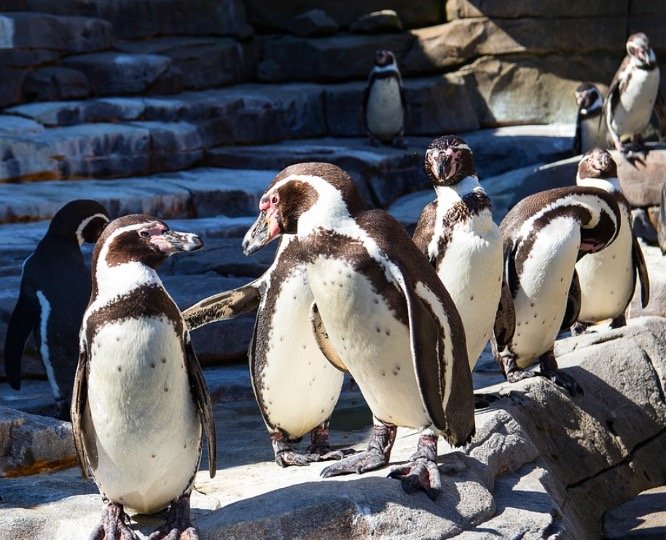
Only around 12,000 mating pairs of Humboldt penguins are left today. In Peru, there are roughly 4,000 pairs, while in Chile, there are about 8,000 pairs. This penguin population is in decline owing to pressures from people and natural predators.
What Is The State Bird Of Arkansas?
Because of their declining population, these penguins have been designated as vulnerable. There are a number of zoos in the United States where you may view these penguins in person. The Saint Louis Zoo, Denver Zoo, Oregon Zoo, Akron Zoo, and Philadelphia Zoo are among them.
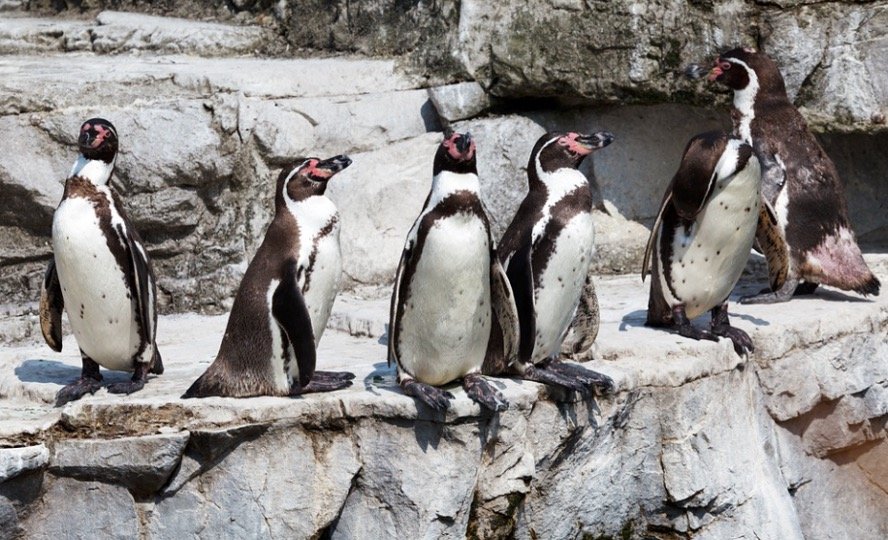
Amazing Humboldt Penguin Facts
• Adult Humboldt penguins have black feathers, whereas babies have brown feathers.
• Unlike other birds that only use their food as paddles, these penguins also steer with their feet.
• To communicate, Humboldt penguins have created a variety of cries. They have a warning cry if they are threatened, and a bray call to attract a partner, for example.
• These penguins build their nests out of guano, which is made up of layers of bird faeces.
• The oldest Humboldt penguin was 36 years old when he died.
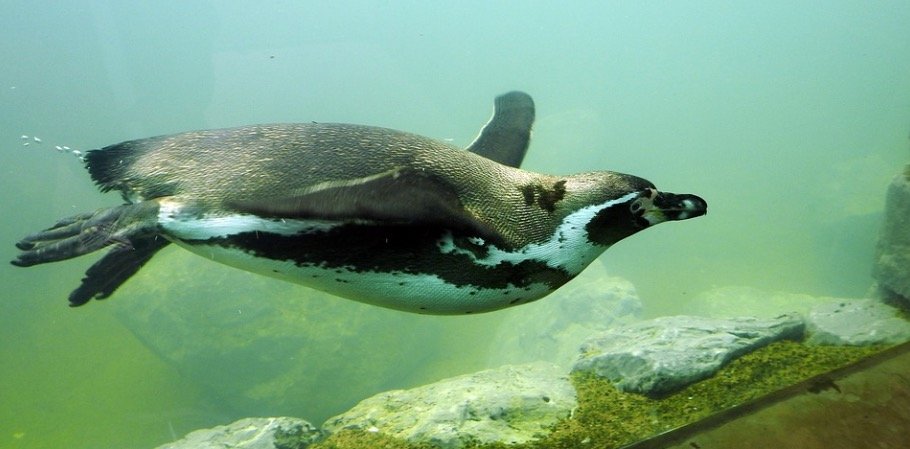
Humboldt Penguin Species
Spheniscus humboldti is the etymology of the birds. The name Spheniscus comes from the Greek word sphniskos, which means “little wedge.” The form of a penguin’s body is referred to by this term.
Humboldt, a German scientist and adventurer, is referred to as “Humboldti.” Alexander Von Humboldt is the name of the marine current that runs around the west coast of South America, where the penguins dwell.
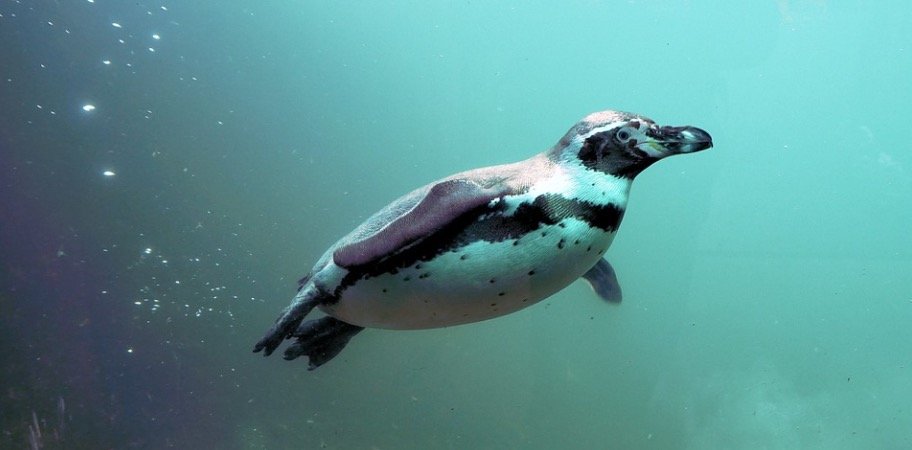
Humboldt Penguin Appearance and Behaviour
They are black and white, much like other penguins. This is one of the adaptations that helps penguins blend in with their surroundings and stay safe from predators. A white stripe runs sideways from over their eyes to around their ears on their heads.
At their throat, the stripes from both sides of their heads connect. Adult birds have a white belly and a black breast band. Pink splotches can also be found on their feet, cheeks, and under their wings.
Do Owls Eat Snakes? Everything You Need To Know
Three layers of overlapping short feathers and a heavy coating of fat work together to keep these penguins dry and warm. Other adaptations that have helped the Humboldt penguins thrive in their natural habitat include: Young penguins are brown instead of black and do not have a breast band, which distinguishes them from their older counterparts.
Unlike the Magellanic Penguin, which looks remarkably similar to these birds, they have two black breast bands. Adult penguins are about 28 inches long and weigh about 9 pounds, which is about the same as a domestic cat’s weight.
Female penguins are generally smaller than male penguins. Humboldt penguins are gregarious creatures who love to be in groups. Rookeries are small groups of birds that dwell together.
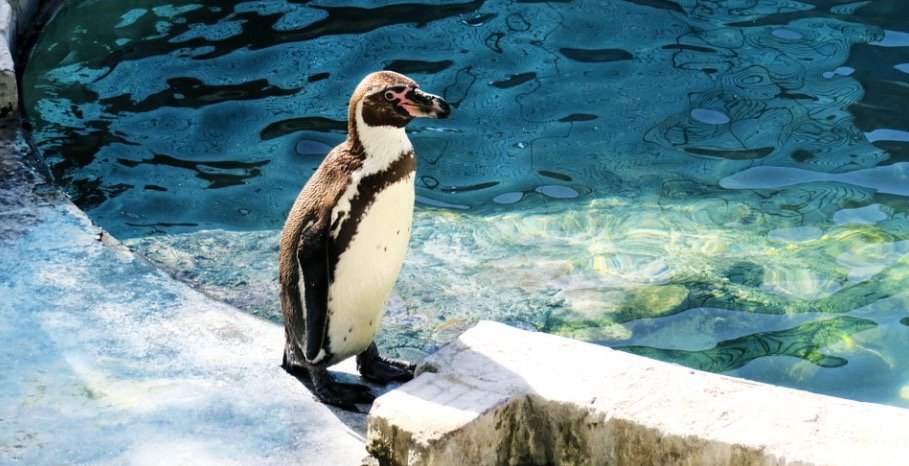
Humboldt Penguin Diet
Anchoveta, a tiny fish, is the preferred meal of the Humboldt Penguin. They consume sardines, krill, and squid in addition to anchoveta.
Humboldt Penguin Predators, Threats and Conservation Status
Tragically, these penguins are preyed upon by a variety of predators and hazards. Sea lions, leopard seals, fur seals, killer whales, and great white sharks all consume them. Snakes, foxes, and birds frequently devour the eggs of Humboldt penguins.
Humans, in addition to natural predators, are a threat to these penguins. Commercial fishermen fish in the areas where penguins dwell, reducing the amount of fish accessible to the penguins. Humboldt penguins are also killed when they become entangled in fishermen’s nets.
Humans also pose a harm to their ecosystem by harvesting guano deposits for fertilizer. Because these penguins like to nest in guano deposits, there are fewer places for them to do so when resources become scarce.
Do Birds Eat Spiders? Everything You Need To Know
These birds are likewise threatened by climate change. The number of fish accessible in the Humboldt Current has begun to decline as arctic temperatures rise.
Humboldt penguins are in danger of extinction due to all of the risks they face. Their conservation status is now fragile.
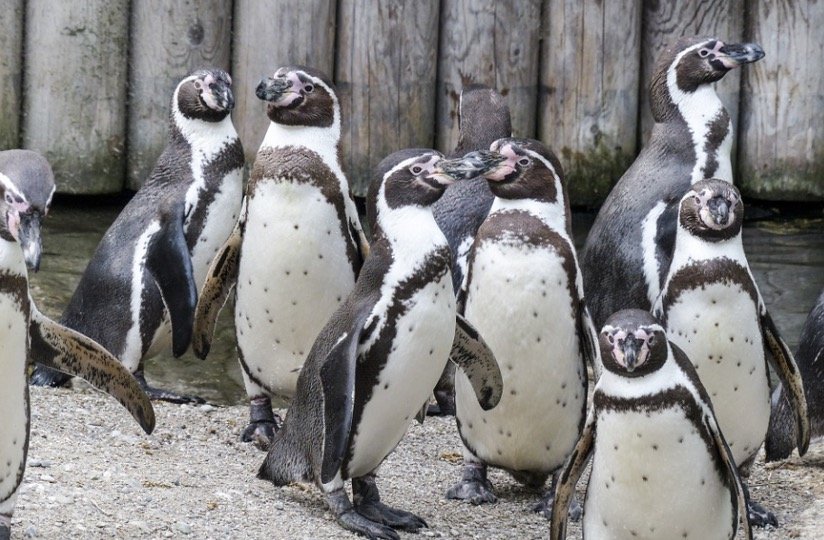
Humboldt Penguin Reproduction, Babies and Lifespan
Like other penguins, Humboldt penguins also find a permanent partner. During courting, these penguins lower their heads and exchange looks with penguins of the opposing sex using alternate eyes.
To attract a partner, they raise their heads, flap their wings, and make a loud cry. The male and female penguins collaborate to excavate their tunnel in guano, or dried bird dung. At any given time, each female produces two eggs.
Do Birds Eat Bees? Everything You Need To Know
The months of April through August are the most fertile for producing eggs. Incubation takes roughly 40 days for the eggs. Both male and female penguins take turns sitting on the eggs during the incubation phase.
When they are hatched, baby penguins have grayish-brown feathers. The newborn penguins will moult at the age of 70 to 90 days. Their brown baby feathers are replaced with grey adult feathers at this time.
The baby penguins, on the other hand, will not receive their black breast bands until they reach adulthood. The penguin chicks are unable to regulate their body temperature until they have grown into their adult feathers.
To keep warm, they must remain in their nest, and their parents feed them by regurgitating food. To keep the chicks secure, one parent will stay with them at the nest.
After they moult and grow their adult feathers, the chicks are ready to leave the nest and start seeking food on their own. When Humboldt penguins reach the age of two, they are called adults.
Can Pheasants Fly? Everything You Need To Know
They return to the rookery at this time to find a mate. The average Humboldt penguin lives for roughly 20 years. However, in captivity, some of these penguins may live up to 30 years. The oldest of them survived to be 36 years old. Emmanuelle was her moniker, and she was a zookeeper at the Akron Zoo in Ohio.





